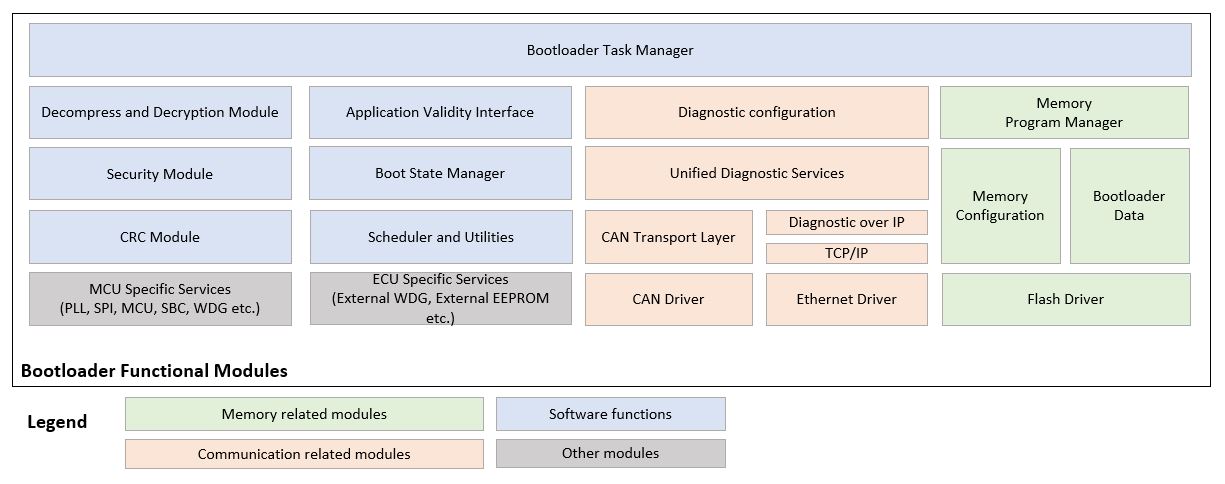In an automotive ECU, Bootloader is a standalone program which starts executing on power-up. This downloads an application software onto the ECU through a diagnostic communication link. The download feature is essential to reprogram the ECU during development, production and service.
AGNOSAR® Bootloader software is modular and flexible enough that it can be configured to support CAN(CAN-FD) or Ethernet communication bus based on the end-user requirements.
AGNOSAR® Bootloader software can be preconfigured to support two types of Bootloader architectural requirements-
- PBL and SBL (Type 1 Bootloader) – This Bootloader concept is based on a Primary Bootloader (PBL) and a Secondary Bootloader (SBL). PBL is fixed in the ECU and executes always during power-on before the application is started and is responsible to download SBL onto RAM. SBL includes a flash drive and downloads the application executables parts and configuration files onto the ECU’s flash memory.
- FBL and FLD (Type 2 Bootloader) – The Flash Bootloader (FBL) is permanently placed in a protected boot sector and will execute directly after reset and implements the communication stack, UDS, and core engine for flash programming. Flash driver (FLD) will be downloaded by the tester tool before downloading application executables software parts. Optionally it can be copied from encrypted ROM before executing flashing-related operations.

